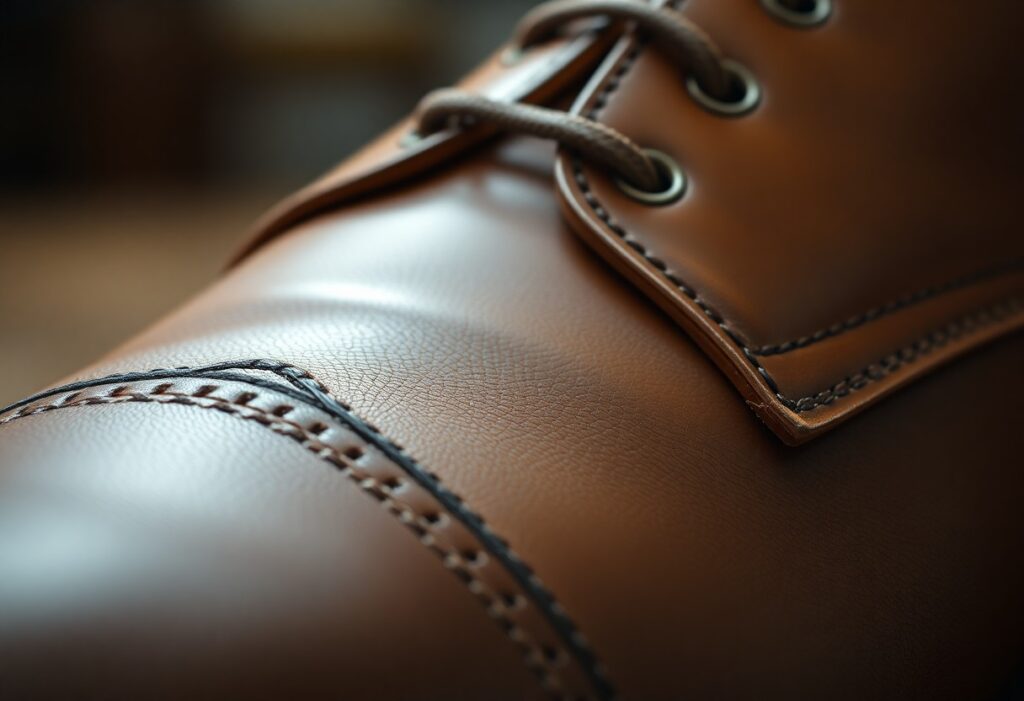
Many shoe enthusiasts are often perplexed by the distinctions between apron front and split toe seam variations. Gaining a thorough understanding of these design elements is vital, as they serve as critical features that significantly influence the quality and aesthetic of your footwear. From the meticulous pie crust stitching to the elegant reverse skin stitching, this in-depth guide will enable you to identify and appreciate the various seam types. Whether you are evaluating loafers or split toe derbies, your ability to recognize quality craftsmanship is fundamentally tied to your familiarity with these unique features. The construction techniques can differ greatly, from basic machine-stitched seams to premium hand-stitched details that enhance both the functionality and visual appeal of your shoes.
Gain Insight into the Key Differences Between Seam Types for High-Quality Footwear
Developing a solid understanding of apron front and split toe seams is essential for discerning quality in the art of shoemaking. These elements intricately weave together functional and decorative aspects within shoe creation, necessitating specific techniques and tools for effective implementation. Familiarizing yourself with these foundational concepts will deepen your appreciation of the craftsmanship involved, ultimately preparing you for making informed choices when selecting footwear that aligns with your style preferences and quality standards.
Dive into the Unique Features of Apron Front and Split Toe Designs
To fully appreciate these components, it is crucial to understand that an apron front is the leather piece forming the shoe’s tongue, extending gracefully to the toe area. In contrast, a split toe design involves two leather pieces seamlessly connected at the toe tip. Notably, while shoes can showcase an apron without featuring a split toe, the majority of split toe designs are notably enhanced by the presence of an apron. Understanding these definitions will greatly enhance your appreciation of shoe designs, guiding you in selecting styles that resonate with your aesthetic tastes.
Essential Terminology for Mastering the Craft of Shoe Construction
It is vital to familiarize yourself with terms such as pie crust stitching, skin stitching, raised lake, and round closing. Your understanding of these terms will empower you to differentiate between various seam types and their respective construction methods. Key terminology includes the ‘lake,’ referring to the seam that attaches the apron to the shoe, and the ‘grain side,’ denoting the outer surface of the leather. Expanding your vocabulary in this area will greatly enhance your ability to engage in discussions and practical work involving these techniques, transforming you into a more informed consumer and craftsman.
Grasping basic terminology is fundamental; for instance, understanding the ‘lake’—the seam connecting the apron to the shoe—is essential. Moreover, the term ‘grain side’ pertains to the outer leather surface. Your familiarity with these terms will not only enhance your knowledge but also elevate your discussions and practical applications regarding shoemaking techniques, enabling you to make better choices concerning footwear quality.
Choosing High-Quality Materials and Tools for Seam Construction
To embark on your shoemaking journey, a minimal amount of equipment is necessary. You will require high-quality leather, suitable needles, thread, and essential leatherworking tools. The success of your projects largely hinges on your careful selection of materials tailored to your specific designs. Opting for premium materials will establish a strong foundation for your craftsmanship, ensuring that the final product meets your expectations for durability and style.
It is essential to equip yourself with the right tools, including leather skiving knives, awls, and specialized needles that cater to your specific needs. The thickness of the thread and the quality of the leather will significantly influence the outcome of your work, making their selection paramount for successful seam construction. Investing in high-quality tools will greatly enhance your ability to create beautiful and functional footwear.
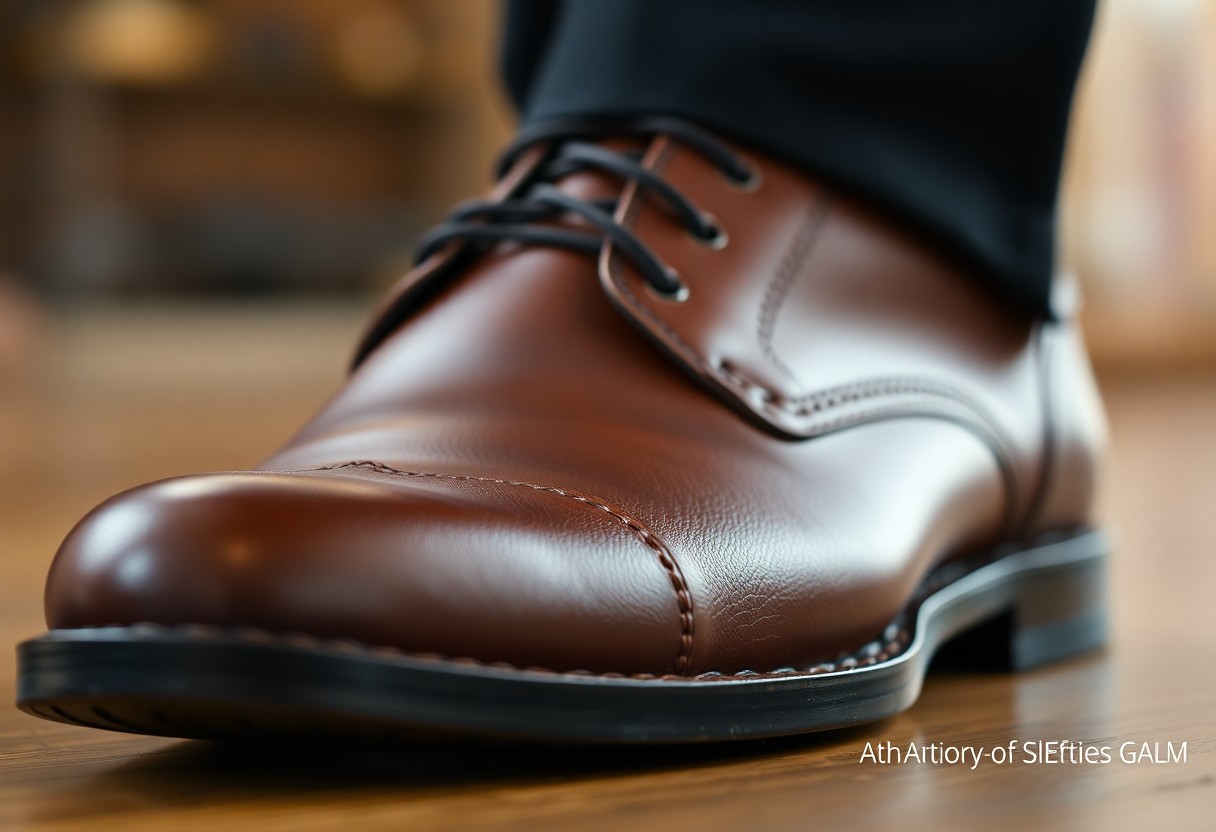
Explore the Range of Leather Seams in Footwear Design
Within the realm of shoemaking, different leather seams are available in a variety of styles, each serving unique purposes in shoe construction. The array of seam types ranges from basic plain lapped seams to intricate round closing techniques. The choice of seam not only impacts the aesthetics of the shoe but also its overall durability and functionality, making it essential for designers to thoughtfully consider their options.
| Seam Type | Primary Use |
|---|---|
| Plain Lapped | Basic upper construction |
| Raised Lake | Apron fronts |
| Split Raised | Decorative elements |
| Round Closing | Premium construction |
| Skin Stitch | High-end finishing |
Advantages of Utilizing Single Piece Leather Seams in Shoe Making
As you delve into single piece constructions, you will discover that these seams yield clean lines and simplify assembly. The leather is folded and stitched continuously, effectively minimizing weak points while creating a seamless appearance that enhances both durability and aesthetic appeal. This technique not only elevates the shoe’s overall look but also contributes to its longevity, making it a favored option among craftsmen.
Discovering the Benefits of Two-Piece Leather Seams
When working with separate leather pieces, these seams demand precise alignment and careful skiving. The joining of these pieces creates distinct visual elements while ensuring the structural integrity of the shoe design. The two-piece construction allows for greater design flexibility, enabling you to create intriguing pattern combinations that not only enhance visual appeal but also contribute to the overall durability of your footwear when executed accurately.
Utilizing two-piece constructions broadens your design possibilities, as it allows for creative combinations of patterns and textures. When executed with precision, these techniques can lead to shoes that are not only visually striking but also exceptionally durable, ensuring a long-lasting product that withstands the rigors of everyday wear.
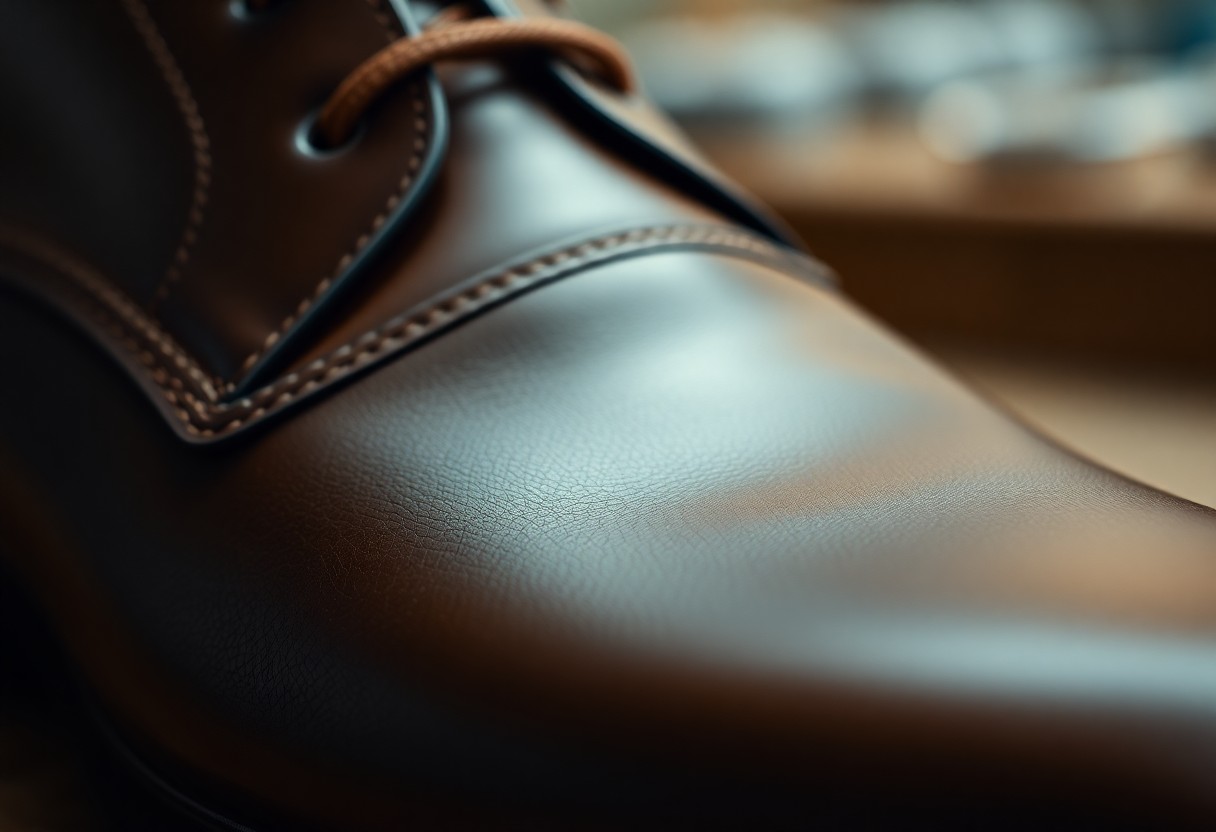
Your All-Inclusive Guide to Mastering Seam Construction Techniques
While mastering the techniques behind apron front and split toe seams may appear intricate, proficiency can be attained through meticulous attention to detail and consistent practice. Your success will be largely dictated by following established steps and utilizing the appropriate tools for each phase of construction. By methodically advancing through each stage, you will cultivate the skills necessary to create high-quality footwear.
| Basic Tools | Special Equipment |
| Leather needle, Thread, Awl | Skiving knife, Punching tool |
Preparation and Planning: The Foundation of Seam Construction
Preparation is a crucial element in ensuring successful seam construction. Accurately marking your stitching lines and ensuring that your leather pieces are properly skived for optimal results is essential. Always begin with a test on scrap leather to refine your skills before committing to your final project. This practice allows you to enhance your techniques without risking valuable materials.
Fundamental Techniques for Achieving Effective Stitching
When embarking on your seam construction journey, start by mastering basic stitching techniques that emphasize maintaining proper thread tension and consistent stitch length. It is imperative to apply even pressure throughout the stitching process to achieve uniform results. This consistency not only elevates the overall appearance of the seams but also enhances their strength.
To successfully execute a stitch, hold your needle at a 45-degree angle, ensuring that the spacing between stitches remains consistent. Proper thread tension is vital; it should be firm but not overly tight to prevent compromising the leather’s integrity. Mastering these fundamentals will establish a robust foundation for more advanced techniques.
Advanced Techniques in Seam Construction for Professional Finishes
- Split raised lake construction
- Round closing techniques
- Center cord installation
- Decorative side seams
| Technique | Difficulty Level |
| Split raised lake | High |
With advanced seam construction, you will expertly combine various techniques to achieve professional-grade finishes. These intricate methods require precise control and extensive practice to master, ensuring that your craftsmanship stands out and reflects your commitment to quality.
Recognizing the Key Quality Factors in Seam Construction
Comprehending the fundamental aspects of seam construction and material preparation is crucial for making informed decisions about footwear quality. Your primary focus should be on stitch density, leather thickness, and seam alignment. While these factors may vary based on style, the appropriate execution of each directly influences the aesthetic appeal and durability of the final product. Recognizing these elements will aid you in assessing footwear before making a purchase.
Selecting Quality Materials for Optimal Seam Performance
When choosing leather for apron front and split toe seams, the finer details can make a significant difference. It is essential to opt for full-grain leather that exhibits consistent thickness and possesses adequate tensile strength. The leather should offer good flexibility while maintaining its structural integrity. Your choice of material will directly impact both the appearance of the seam and its longevity, thereby influencing your overall satisfaction with the footwear.
Stitching Methods That Guarantee Optimal Outcomes
For the best results, hand-stitching typically provides superior control and precision compared to machine stitching. The strength of your seam is determined by careful thread tension and stitch spacing. When stitching, factors such as thread thickness, needle size, and hole spacing are critical to achieving optimal results. Mastering these elements will empower you to produce seams that are both robust and visually appealing.
It is vital to maintain consistent tension throughout the seam to prevent any potential weak points from forming. Furthermore, the angle of stitching can greatly influence both the strength and overall appearance of the finished product. This meticulous attention to detail will yield footwear that not only looks exquisite but also endures over time.
Enhancing Durability Through Proper Techniques
Prioritizing proper reinforcement and stress point protection is essential for achieving long-lasting results. The durability of your seam heavily relies on appropriate thread selection and meticulous execution of stitching techniques. This commitment to quality will pay dividends in the long run, as your footwear withstands the demands of daily use.
Being aware of wear patterns enables you to spot potential weak points in your seams. Pay close attention to thread quality, knot security, and leather preparation. Additionally, the depth of stitching is crucial in preventing seam failures during regular use, ensuring that your footwear remains reliable and stylish.
Expert Insights for Attaining Exceptional Craftsmanship in Shoe Making
Successful shoe craftsmen underscore the importance of precision and technique when creating apron front and split toe seams. Achieving success hinges on appropriate tool selection, thorough leather preparation, and maintaining consistent stitch tension. Recognizing quality materials and the right thread thickness is vital for achieving professional-grade results that reflect your skills and commitment.
Professional Techniques for Mastering Seam Work in Footwear
To effectively master seam work, consider utilizing sharp tools, maintaining your leather at optimal moisture levels, and practicing consistent stitch spacing. It is advisable to always test your techniques on scrap leather before moving to your final pieces, ensuring that you achieve the desired results and avoid costly mistakes.
Avoiding Common Mistakes in Seam Construction
In the domain of seam work, common errors include rushing the process and mismanaging thread tension. Your diligence in leather preparation and tool maintenance will mitigate many of the frequent issues encountered. Taking the time to double-check your work will save you from potential frustrations later.
To execute a successful seam, steer clear of uneven stitching, improper leather skiving, and inaccurate hole spacing. Always ensure to review your work under sufficient lighting and maintain steady hand pressure throughout the entire process to achieve optimal results that meet your high standards.
Guidelines for Effective Tool Maintenance in Shoemaking
Neglecting tool maintenance can seriously affect the quality of your seams. Regular cleaning and sharpening of your tools are crucial for maintaining their optimal performance and ensuring consistent results in your craftsmanship. Well-maintained tools are essential for achieving the professional-grade finishes that discerning customers demand.
To prevent damage to your work, maintain a clean and organized workspace. Tools should be stored appropriately and regularly inspected for signs of wear that could negatively impact the quality of your seams. A tidy workspace not only boosts efficiency but also enhances overall craftsmanship.
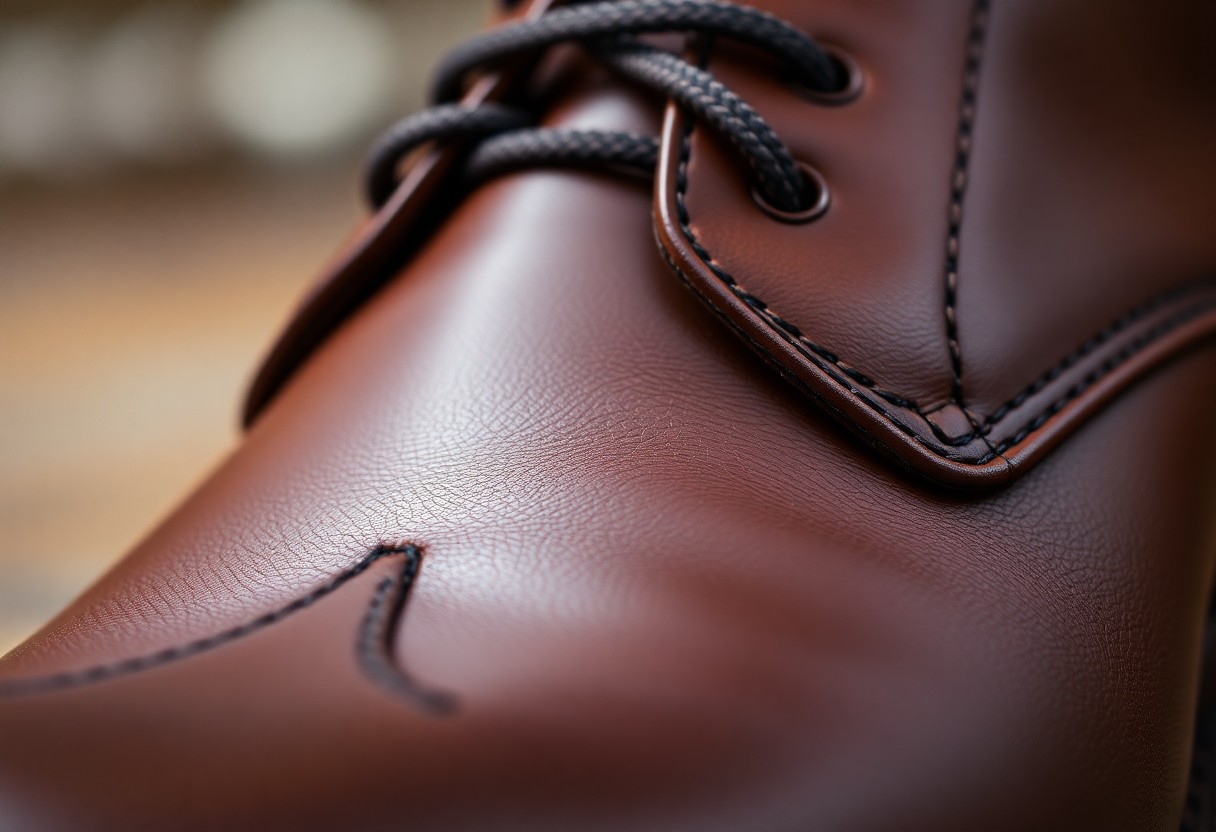 Here’s the structured content for your blog post:
Here’s the structured content for your blog post:
Evaluating the Advantages and Disadvantages of Various Seam Types in Footwear
Your understanding of different seam types will empower you to make informed decisions regarding shoe construction and personal style preferences. Each seam type possesses its own set of advantages and limitations, influencing your choices as you select footwear that fulfills your needs:
| Pros | Cons |
|---|---|
| Enhanced durability with round closing | Higher cost for hand-stitched seams |
| Clean aesthetics with skin stitching | Limited repair options |
| Flexibility with plain lapped seams | Less water resistance |
| Strong construction with raised lake | Complex maintenance |
| Visual appeal of split raised lake | Time-intensive construction |
Aesthetic Considerations When Selecting Seam Types
When choosing seams, you will observe that visual impact varies significantly among types. For instance, plain lapped seams provide a clean and streamlined appearance, while raised lake seams introduce depth and character to the design. Conversely, split toe designs enhance sophistication, and round closing techniques deliver a refined finish that many view as the pinnacle of craftsmanship. Understanding these distinctions will aid you in selecting styles that complement your wardrobe effectively.
Practical Implications and Functionality of Different Seam Types
From a practical perspective, your choice of seam directly impacts shoe performance. Round closing offers superior water resistance, making it suitable for various weather conditions, while plain lapped seams provide flexibility that can enhance comfort. Raised lake constructions strike a balance between durability and style, making them versatile for different footwear applications. Your decisions regarding seam types will ultimately affect how your shoes perform over time.
Factors influencing seam functionality include weather resistance, comfort, and ease of repair. Each seam type requires specific care and maintenance to uphold its structural integrity over time, ensuring that your footwear remains a reliable component of your wardrobe.
Durability Comparisons Among Different Seam Types
| Seam Type | Expected Lifespan |
|---|---|
| Round Closing | 10+ years |
| Plain Lapped | 5-7 years |
| Raised Lake | 7-9 years |
| Split Raised | 6-8 years |
Aesthetic and practical considerations are intertwined when assessing durability. Hand-stitched seams typically outlast machine-made alternatives, especially in areas subjected to high stress. Consistent maintenance can significantly prolong the lifespan of your seams, ensuring that your footwear remains in excellent condition and retains its value over time.
Expanding Your Knowledge of Seam Styles in Shoe Construction
With these insights in mind, you are now better equipped to comprehend the various styles of apron front and split toe seams employed in shoe construction. Your knowledge encompasses everything from basic raised lakes in single leather pieces to intricate round closing techniques that connect separate leather parts. You can easily distinguish between skin stitching, plain lapped seams, and decorative side seams. This guide serves as an invaluable resource, enabling you to discern between seams crafted from one piece of leather and those that join two pieces, ultimately enhancing your decision-making when selecting quality footwear. Your understanding of these construction methods will undoubtedly lead to more informed choices in your shoe selection journey.
Frequently Asked Questions About Seam Types Clarified
Q: What distinguishes a raised lake in one piece of leather from a split raised lake?
A: A raised lake in one piece of leather employs stitching to create an elevated decorative seam with visible threads on both sides. In contrast, a split raised lake incorporates a cut groove in the raised portion, enhancing the visual division between shoe sections. This split version offers a clearer distinction and can be applied to both the lake and toe tip, providing a unique aesthetic.
Q: Can you elaborate on what a round closing stitch is and why it is considered a hallmark of high quality?
A: A round closing stitch, also known as a butt stitch or skin stitch, connects two leather pieces edge-to-edge with stitching that penetrates halfway through the leather. This technique creates a robust seam that can often be invisible from the exterior when executed from the flesh side. Its exclusive handcrafting adds to its reputation for quality and durability, making it a sought-after choice for premium footwear.
Q: How does a plain lapped seam differ from a raised lake seam?
A: A plain lapped seam positions one skived leather piece atop another, joining them via machine stitching. In contrast, a raised lake seam connects leather pieces flesh-side to flesh-side near the edges, generating an elevated seam that prominently displays leather edges. The raised lake design provides more visual detail and can be performed either by hand or machine, whereas plain lapped seams are generally machine-made and simpler in appearance, impacting their overall appeal.
The Article Guide to apron front and split toe seams understanding styles and craftsmanship appeared first on My Shoes Finder
The Article Apron Front and Split Toe Seams: A Craftsmanship Guide Was Found On https://limitsofstrategy.com
References:
Apron Front and Split Toe Seams: A Craftsmanship Guide
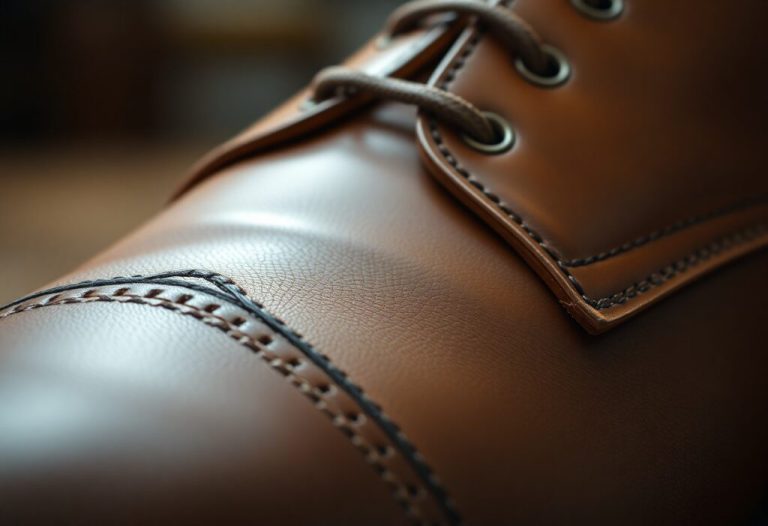


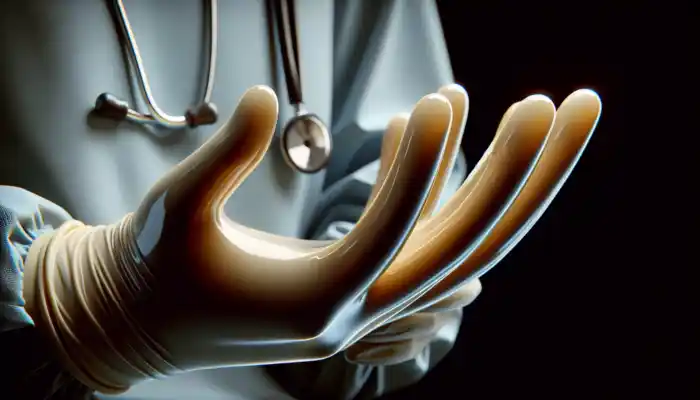

Your exploration of the nuances between apron front and split toe seams sheds light on an often-overlooked aspect of footwear craftsmanship that truly deserves more attention. As someone who has dabbled in both collecting and designing shoes, I’ve come to appreciate how these details can not only influence aesthetics but also the overall wearing experience.
It’s fascinating how those intricacies in shoe design can subtly transform our experience, isn’t it? The difference between apron front and split toe seams might seem small at first glance, but when you really dive into the craftsmanship, you start to see how they can affect not only the aesthetic appeal but also the fit and functionality.
The nuances in shoe design really do have a remarkable impact on our everyday experience. You’re spot on about the differences between apron front and split toe seams. While they may look like minor details, they actually play significant roles in both the shoe’s fit and how it holds up over time.
You’ve captured the essence of shoe design beautifully. The nuances between elements like apron front and split toe seams really do play a significant role in the overall experience. It’s fascinating to think about how these specific details can shift not just how a shoe looks, but also how it interacts with our foot’s movement.
I appreciate your take on the intricacies of apron front and split toe seams. It’s fascinating how such small design elements can change the footwear experience so much. When I first started digging into shoe design, I was surprised by how these details aren’t just about looks; they can significantly affect how a shoe fits and feels.
It’s interesting you mention that; I’ve found the connection between design details and comfort in footwear to be quite profound as well. Those nuances, like the apron front or split toe seam you mentioned, often go unnoticed by the average consumer but really play a pivotal role in how a shoe behaves when worn.
It’s refreshing to hear your perspective on the subtlety of design in footwear. Those details really do hold a significant impact on both aesthetics and comfort. Take the apron front, for instance; it not only adds an element of elegance, but it also influences how the shoe fits and flexes with the foot.
I completely resonate with your thoughts on the subtlety of design in footwear. It’s interesting how often the little details can go unnoticed while having such a profound effect on the overall experience. The apron front really is a prime example; it strikes a balance between form and function that can make all the difference.
You really captured an essential element of design in footwear. It’s fascinating how unnoticed details—like the apron front—can elevate both style and comfort. When you think about it, the balance between form and function isn’t just about aesthetics; it’s also about how those elements work together to enhance our daily lives.
You’ve touched on an interesting point with the apron front. I’ve always found that the subtleties in design can really transform not just how a shoe looks, but how it functions in everyday life. When a shoe is crafted with attention to details like that, it can significantly enhance the wearer’s experience.
I really appreciate your thoughts on design nuances; they reminded me of some inspiring examples I recently came across in a piece about marketing agency websites, showcasing how those subtle touches can elevate both aesthetics and user experience.
‘Marketing Agency Websites for Inspiring Ideas’
https://merrebes.com.au/marketing-agency-websites-for-inspiring-ideas/.
You’ve hit on a crucial aspect of footwear that often skips under the radar. It’s surprising how much the smallest design elements can alter not just aesthetics but the entire experience of wearing a shoe. Take that split toe seam, for example. While it may seem like just a stylistic choice, it actually influences the shoe’s flexibility and the way it conforms to the foot. You wear a shoe that understands you, or one that fights against the natural movement of your foot, based largely on such subtleties.
You’ve hit the nail on the head. Those small details can really transform a shoe from just something to wear into a meaningful experience. The apron front and split toe seam, for instance, aren’t just about aesthetics; they influence flexibility and support in surprisingly impactful ways. I remember trying on a pair of shoes just because they had that slight difference in design, and I could instantly tell how much more comfortable they felt over time. It’s fascinating how craftsmanship and thoughtfully considered design can enhance our everyday lives, often in ways most of us don’t recognize at first. Do you have any particular shoe designs that you’ve found especially comfortable because of these nuances?
You’ve really captured the essence of how subtle details in design can lead to a significant difference in comfort and overall experience. It’s intriguing to think about how often we overlook those nuances in our daily choices. I’ve had a similar experience where a pair of shoes caught my eye not just for their look but for the way their construction promised better support.
It’s great to hear that you’ve had a similar experience with shoes; it really underscores the point about how thoughtful design can blend aesthetics with functionality. The way a shoe looks can draw us in, but it’s often those unseen details—like the arch support, cushioning, or even the materials used—that play a huge role in how we genuinely feel when we wear them.
It’s interesting how our appreciation for shoe design grows as we learn more about the details, isn’t it? The way something like an apron front seam or a split toe can influence comfort really highlights the blend of art and science in footwear design. It reminds me of how important fit and feel are—not just for aesthetics but for overall well-being.
You’re spot on about how our understanding of shoe design can deepen our appreciation for it. Those details like the apron front seam or split toe aren’t just technical choices; they’re crucial for how a shoe interacts with the foot over time. It’s fascinating to see how designers blend functionality with style, often in ways that aren’t immediately visible.
It’s great to hear from someone who’s not only collected but also dabbled in designing shoes. You know, it’s a rabbit hole that gets deeper the more you explore it, isn’t it? Apron front versus split toe seams might seem like something best left to fashion designers and cobblers in fancy workshops, but really, it’s all about understanding how these little design choices can reshape our experiences.
It’s great to hear your thoughts on the intricacies of apron front and split toe seams. It’s fascinating how those little details can shape the entire shoe experience, right? When you start to dive into the craftsmanship behind footwear, it’s like peeling back layers of a finely made onion. Each seam, each stitch tells a story, often reflecting the designer’s philosophy and the wearer’s lifestyle.
You’re spot on about how those little details in shoe design can make such a difference. It’s remarkable how much thought goes into the seams and stitching. An apron front can not only enhance aesthetic appeal but also add to the comfort and fit of the shoe, adapting to the wearer’s movements. As for split toe seams, they do more than just look good; they provide freedom of motion and often improve durability.
It’s great to hear your thoughts on this. The way details like apron front and split toe seams can influence both the look and feel of shoes is such an interesting topic. When you dive into the craftsmanship, it becomes clear that these choices are not just about aesthetics—they really shape the experience of wearing the shoes.